Even though about 466 million people worldwide experience some degree of hearing loss, many people wait an estimated 5 to 20 years to seek treatment. (1, 11) Waiting to get help while putting up with hearing loss can negatively impact your physical, emotional, and mental well-being. (2) Fortunately, the best hearing aids make it easier to hear the world around you so you can live better.
Hearing loss varies by type, degree, and the part of the ear or nerves that are affected, so it’s important to find a hearing aid that meets your specific needs. (3)
We evaluated three Starkey hearing aids, including its most customizable model, the Starkey Evolv AI, and its smallest model, the Signature Series. The brand’s latest model, the Genesis AI hearing aid, earned rave reviews from our tester for its lightning-fast sound processing and extensive battery life—at 51 hours, it’s the longest battery life of any RIC hearing aid in the industry.
Our favorite Starkey hearing aids
The Evolv AI packs several features into a discreet shell: smart sound quality and noise control, wireless streaming, and remote adjustments. It’s also one of the only hearing aids on the market that includes fall detection, alerts, and activity tracking. These features and customization options make the Evolv AI a great choice for people with moderate to severe hearing loss.
Our picks for the best Starkey hearing aids
Compare Starkey hearing aids
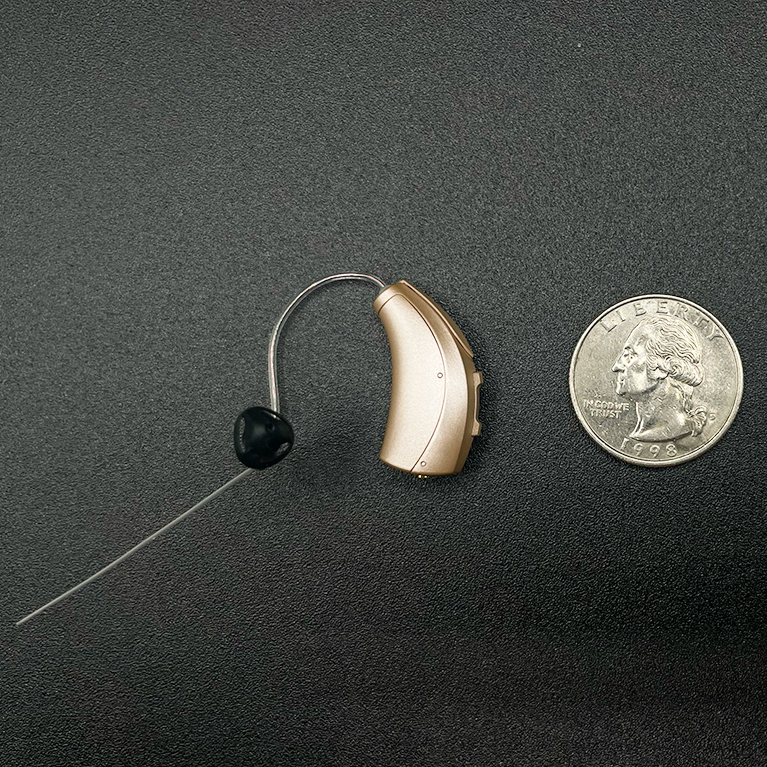
|
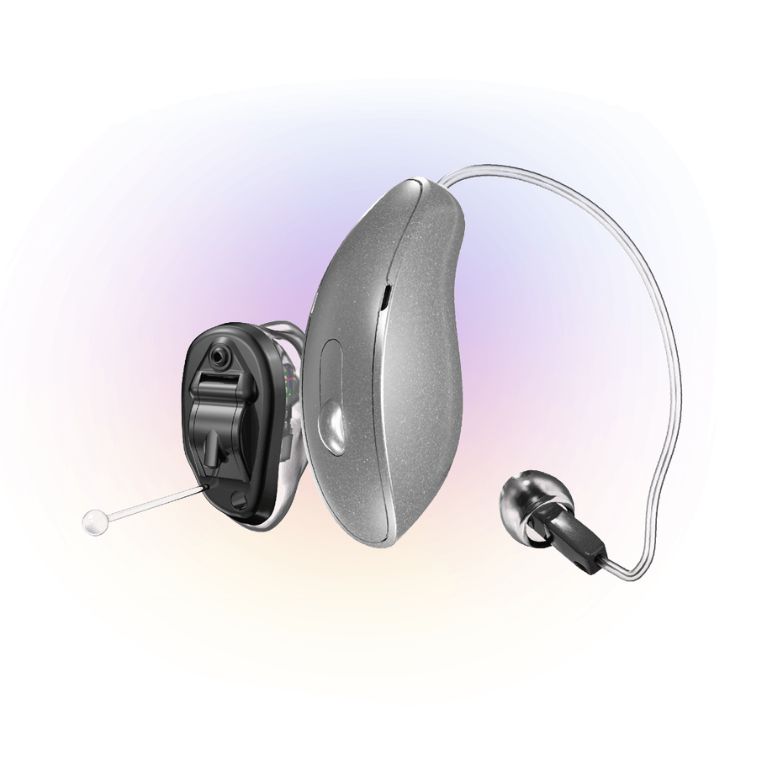
|
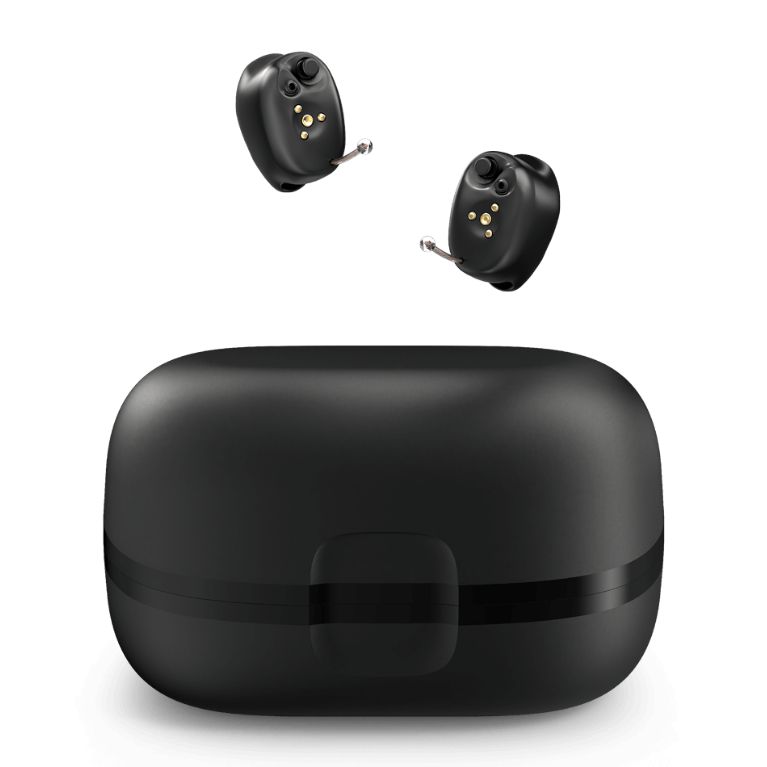
|
|
| Starkey Evolv AI | Starkey Genesis AI | Starkey Signature Series | |
| Rating | |||
| Price | $2,398–$4,798 | $2,798–$4,598 | $4,898 |
| Type (OTC or prescription) | Prescription | Prescription | Prescription |
| Style | Behind-the-ear (BTE), receiver-in-canal (RIC), in-the-ear (ITE), in-the-canal (ITC), completely-in-canal (CIC), invisible-in-canal (IIC) | RIC, ITE, ITC, CIC, IIC | CIC, IIC |
| Battery type | Rechargeable or disposable | Rechargeable or disposable | Rechargeable or disposable |
| Bluetooth | Yes | Yes | Yes |
Starkey Evolv AI


Key product features
What you should know
The Starkey Evolv AI’s 14 different models make it easy for your audiologist to determine the perfect fit and feature combination for you. In addition to its advanced sound quality and Bluetooth technology, the Evolv AI can track your daily activity, including steps and physical activity, plus detect falls and set important health reminders.
- The device connects to Starkey’s Thrive app and Hear Share app, allowing wearers and their caregivers to access health and lifestyle information via their smartphones.
- Starkey Evolv AI costs $2,398 to $4,798, depending on the features selected.
- We recommend the Evolv AI to tech-savvy people with moderate to severe hearing loss who want a custom-fit hearing aid.
- AI technology helps deliver realistic sound quality in a variety of environments, including vehicles, phone calls, music, and conversations. Starkey’s advanced noise reduction feature helps clarify and adjust to different sounds quickly.
Starkey Evolv AI hearing aids overview
Starkey is often recommended to people who need custom hearing aids because the brand has more in-the-ear (ITE) and in-the-canal (ITC) styles than other top hearing aid companies—which are more discreet than behind-the-ear (BTE) or receiver-in-canal (RIC) styles. This allows hearing care professionals to customize the device to your type of hearing loss by considering factors like speaker placement and how it will amplify sound. (4) For example, ITE styles put the speaker in the outer ear, while ITC devices are in the lower outer ear and the canal. People who wear glasses also tend to prefer this style because the hearing aid won’t interfere with the temples.
The Evolv AI hearing aid has five technology levels: Economy 1000, Basic 1200, Select 1600, Advanced 2000, and Premium 2400. (Starkey’s advanced technology is one way the brand justifies its slightly higher price point.) Your hearing professional will help you determine a level that’s best for your lifestyle and degree of hearing loss.
Starkey hearing aids may be better suited to smartphone users and tech-savvy people, but our testers say that setting up the feature-packed device was simpler than expected. “The user manual is more helpful and clear than Phonak or Oticon, [and the] button for adjustments and charger are easy to use,” says a tester. While our testers set up the devices themselves for the purpose of our Starkey hearing aids review, your audiologist will help set up and program your device.
If you opt for Starkey’s app features, make sure your hearing professional demonstrates how to set up fall detection and other information you want to share with loved ones via the Hear Share network. Features like these, which allow hearing aid users to involve loved ones in their daily activities, are important for combating the social isolation that often follows hearing loss. (5)
The Evolv AI’s two-way audio is one example of how Starkey hearing aids outperform other brands. Answering calls via Bluetooth is not a new hearing aid feature, but the ability to respond to the call via the hearing aid’s microphone is. Using the hands-free tool, wearers can stream calls to their smartphone or iPad, eliminating the need to handle the phone.
Specs
| Style | BTE, RIC, ITE, ITC, CIC, IIC |
| Battery | Rechargeable or disposable battery |
| Bluetooth | Yes |
| Prescription | Yes |
| Warranty | Five years |
| Financing | Yes |
| Dimensions | Depends on the style |
What customers are saying
Starkey Hearing aids have a 2.7 out of 5-star rating on TrustPilot with 374 reviews—56% of reviewers rate their experience with the brand as four stars and above. While only a few customers specifically mention the Evolv AI hearing aid in their reviews, many of the comments are positive. Wearers commonly cite how strong the sound quality is across different listening environments. Some users report glitches when connecting the devices to their TV, phone, or Thrive app.
Verified reviewer Stephen P. loves that he can customize his devices but says some of the advanced technology features take a bit to get used to.
“The greatest thing about my new Starkey Evolv hearing aids is that they have a combination of, for me, ‘must have’ features that were not available anyplace else,” Stephen writes. “Included in that combination was the ability to move forward or backward in changing memories, the volume I had set staying in a memory when I left and then returned, telecoils, and others. There are features that are new to me that I don’t care for, but I’m getting used to them. My greatest disappointment is that I bought them only months before the all-new Genesis series came out.”
Other customer reviews mention difficulty communicating with Starkey’s customer service. We experienced similar issues while attempting to ask questions using the online chat feature, which did not respond or connect us to a live representative even after 24 hours. Our second attempt to contact the company was more successful, and we received a response within two hours.
We recommend contacting your hearing care professional to resolve any issues you have while setting up, programming, or using the device—you’ll likely receive a faster response this way.
We’ve featured Starkey Evolv AI hearing aids in:
Who Starkey Evolv AI hearing aids are recommended for:
- Adults who live alone: The Hear Share and Thrive apps give loved ones access to the user’s health information and hearing aid usage via their smartphones. This, plus the ability to set reminders and fall detection alerts, allows the wearer to stay independent while also providing peace of mind for their family.
- Anyone looking for a stylish, discreet hearing aid: This hearing aid comes in six colors and six styles, making it easy for wearers to find a low-profile device that improves speech recognition without hindering their lifestyle.
- Tech-savvy folks with lots of devices: We recommend Bluetooth hearing aids with streaming capabilities to anyone who regularly uses iPads, smartphones, computers, or smart TVs. Hearing aid wearers often report hearing a whistling sound when holding a telephone to their ear, but hands-free calling helps avoid this. Plus, when a smartphone is connected to the hearing aid, the streaming technology allows users to make faster adjustments as sound levels change—like when commercials are louder than the show.
- People with active lifestyles: Users can track daily steps and movements and set goals in the Thrive app. Feedback management and noise cancelation features help improve sound quality, especially in outdoor environments where wind noise can reduce hearing ability. However, the Evolv AI hearing aid has the shortest rechargeable battery life of all Starkey models, so keep that in mind during longer outings.
Who Starkey Evolv AI hearing aids are not recommended for:
- Anyone wanting a more waterproof device: According to a Starkey representative, the Evolv AI hearing aid is water-resistant, meaning it’s safe to wear in the rain, but users need to take it out when showering or swimming. For a more traditionally labeled “waterproof” hearing aid, we recommend Starkey’s Genesis AI model. It has an IP68+ rating, meaning it can withstand a maximum depth of nearly five feet for up to 30 minutes, and it is also protected from dust. (6)
- People who prefer a simpler hearing aid: Starkey’s expansive features require some technical skills to use certain accessories and the Thrive app. If you prefer a more straightforward device, a more affordable hearing aid that’s easier to manipulate might be a better option.
Starkey Evolv AI hearing aid prices
The Evolv AI hearing aids cost between $2,398 and $4,798 per pair, depending on the features you choose. Starkey says adding tools such as Bluetooth, activity tracking, noise cancelation, and volume control will increase the overall cost.
We suggest working with your hearing professional to determine which features are most beneficial for your type of hearing loss and lifestyle.
How we rated Starkey Evolv AI hearing aids
Based on their performance in the key categories below, the Starkey Evolv AI hearing aids earned an overall score of 4.6 out of 5. To learn more, read our full hearing aids testing methodology.
- Performance: We evaluate the sound quality, noise reduction effectiveness, feedback prevention, and customization.
- Features: Our testing team measures the device’s accessibility, durability, battery quality, water resistance, and digital connectivity.
- Value: Hearing aids that offer high value aren’t just affordable, but they also provide strong performance, are durable, and meet the user’s hearing needs.
- Customer experience: We meticulously assess the whole buying experience, including navigating the ordering process, tracking and receiving the devices, and communicating with customer support.
Warranties and policies
Starkey provides warranty information to the hearing aid professionals who fit the devices to your ear. While the website lacks specific coverage details, Starkey cites its optional Worry-Free Warranty for all hearing aids purchased within the last five years that remain in working condition.
New Starkey hearing aids carry warranty coverage for internal components and external damage, as well as remakes needed within the first 90 days to adjust the fit.
If you need to return or repair your hearing aids, contact the hearing professional you purchased the devices from.
Additional models from Starkey
Starkey Genesis AI
Processes sound four times faster than the Evolv AI. Available in seven models and packs key features into a small device: Bluetooth, activity tracking, location finder, Hear Share network, and language translation.
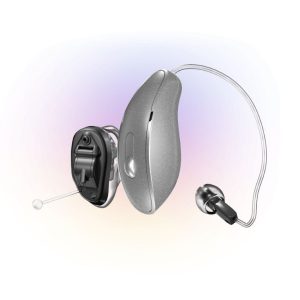

What you should know
- Starkey hearing aids are among the most expensive we’ve tested, but they also have a more complex app and a larger set of tools for customizing users’ experiences. However, our testers say these features could feel overly complex for some wearers.
- The Genesis AI does not come in a BTE style. Wearers who prefer this style will need to choose the Evolv AI.
- As with all prescription hearing aids, Starkey models require custom fitting and programming with an audiologist or hearing professional to ensure maximum performance and comfort.
Key product features:
- The latest technology processes sound four times faster than the Evolv AI.
- The Genesis AI allows wearers to switch to “Edge Mode+,” which uses AI to optimize and automatically adjust settings to the current environment. You can select modes for better sound, enhanced speech, and reduced noise. Wearers can also save these presets for areas they frequent, eliminating the need to constantly adjust to the environment.
- It has the longest battery life of any RIC hearing aid in the industry: 51 hours on one charge. Our testers say the battery voice prompt feature is helpful for those who worry about running out of battery. The device alerts wearers when the battery life has 30 minutes left.
- All Genesis AI models except the completely-in-canal (CIC) and invisible-in-canal (IIC) styles are listed as waterproof and are IP68+ rated.
Recommended for:
- Hearing aid users frequently on the go: Our testers say the “lifestyle hearing device” is great for active people who want top sound technology and a robust feature set. Genesis AI hearing aids are more waterproof than the Evolv AI, which makes them easier to wear at the beach, the pool, or in the shower.
- People with limited hand dexterity: Despite being a smaller, more discreet style, the Genesis hearing aids have an easy-access button for volume changes, which testers say stands out from comparable models. The charger also includes a magnetic cleaning tool for the ports. These features are particularly beneficial if you have limited dexterity in the hands and fingers.
Starkey Signature Series
Processes sound four times faster than the Evolv AI. Available in seven models and packs key features into a small device: Bluetooth, activity tracking, location finder, Hear Share network, and language translation.
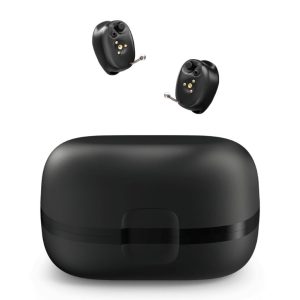

What you should know
- While the Signature Series’ sound technology is just as good as other Starkey models, it does not include popular extras such as fall detection and alerts, activity tracking, or wireless/streaming capabilities.
- If you prefer rechargeable hearing aids, you’ll need to choose the CIC style. Its battery life is up to 38 hours, which falls in the middle range of the Starkey hearing aids we tested.
Key product features:
- Virtually invisible, custom fit using a CIC or IIC style.
- Sound technology reduces transient noise and automatically adapts to wind and machine feedback for better, clearer hearing.
- Rechargeable battery options, with lights that indicate when the aid is charging and when it is fully charged.
Recommended for:
- People who want an effective hearing aid without a lot of extras: The Signature Series prioritizes discretion and convenience without sacrificing sound experience. This might attract wearers who are slightly intimidated by the tech features available with the other models.
- Anyone who prefers in-the-canal hearing aids: CIC hearing aid styles are among the most popular because their discreetness helps reduce embarrassment associated with hearing loss. (7) The Signature Series is a great option for users who want a nearly invisible hearing aid.
We’ve featured Starkey in:
Starkey vs. competitors
While comparable prescription hearing aid models are available at slightly lower prices from ReSound, Phonak, and Signia, they don’t offer the same style customizations as Starkey.
Most notably, Starkey hearing aids include in-the-canal styles, which are typically smaller and don’t include components behind the ear. BTE or RIC models have bigger cases that sit behind the ear and can interfere with glasses. Speaker placement also differs by style, which can change how your brain processes sound. Ask your audiologist what hearing aid style is best for your degree and type of hearing loss before making a decision.
All brands leverage proprietary technology to improve sound quality, so it’s up to you to determine which strategies work best for you. Signia uses OVP (Own Voice Processing) to calibrate your hearing aids, so you hear your voice in a way that feels normal and natural. Phonak uses SmartSpeech™ technology and directional microphones to clarify sounds.
Review the results of your audiogram and discuss your options with your audiologist. Most hearing care professionals let you try on several hearing aid models and styles during your fitting so you can choose one that feels comfortable and treats your type of hearing loss.

|
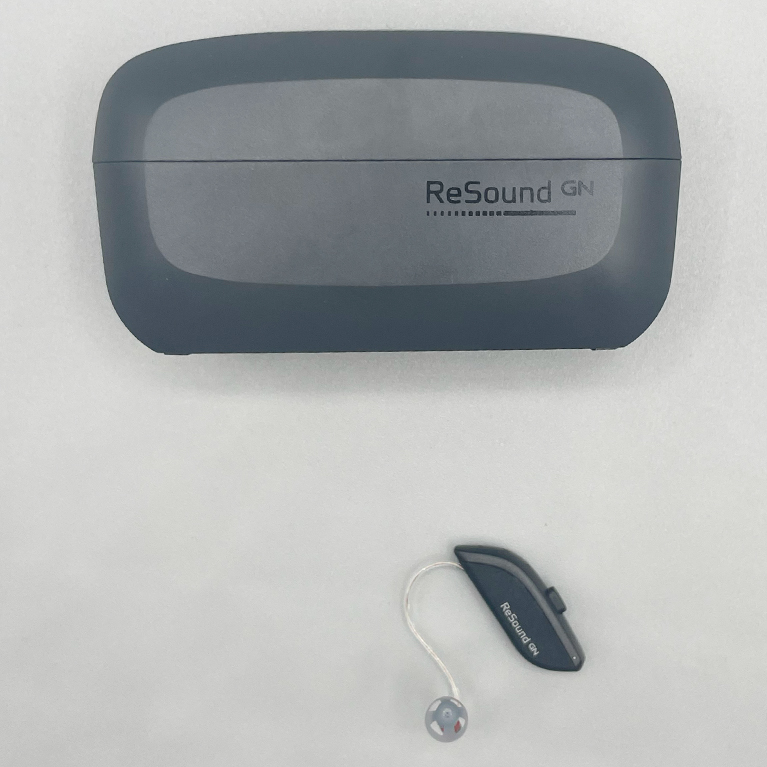
|
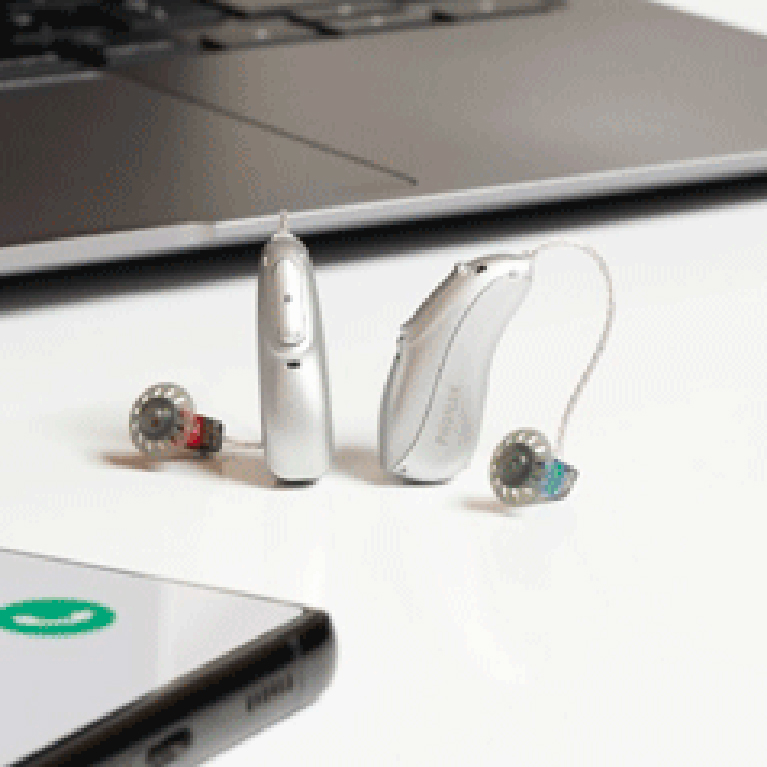
|
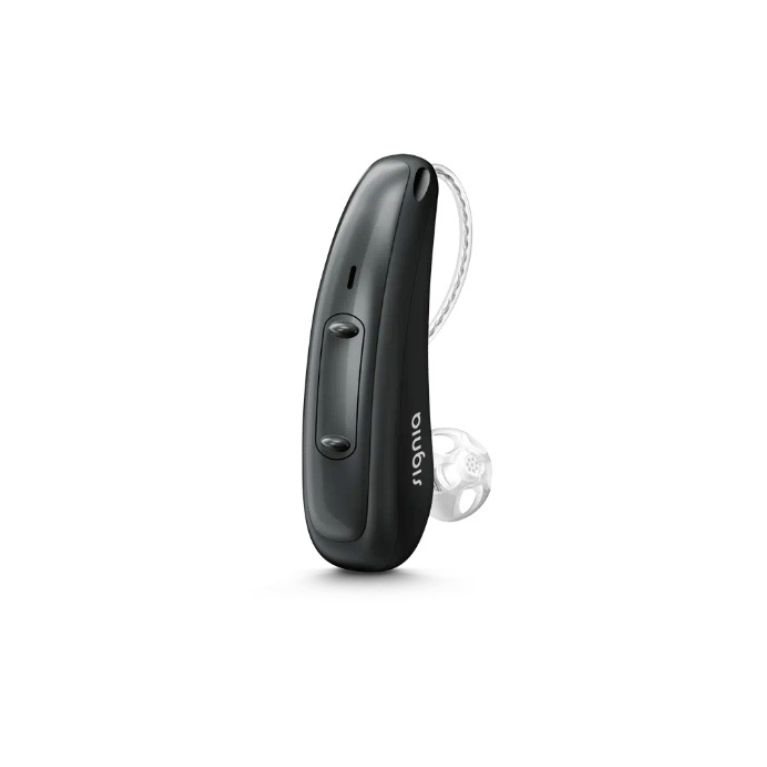
|
|
| Starkey Evolv AI | ReSound Omnia | Phonak Audéo Lumity | Signia Pure Charge &Go X | |
| Rating | ||||
| Price | $2,398–$4,798 | $2,990–$4,498 | $1,199–$4,398 | $975–$3,998 |
| Type (OTC or prescription) | Prescription | Prescription | Prescription | Prescription |
| Style | BTE, RIC, ITE, ITC, CIC, IIC | BTE | RIC | RIC |
| Battery type | Rechargeable or disposable | Rechargeable or disposable | Rechargeable or disposable | Rechargeable |
FAQs
Are Starkey hearing aids good?
Based on our experience evaluating Starkey hearing aids, we feel comfortable recommending its products to people with hearing loss. Starkey is a well-established global hearing aid brand based in the U.S., and it has received numerous awards for its technology, product innovation, and customer service. For example, Starkey is the only brand that includes fall detection in its hearing aids, which is an important feature for older hearing aid users with a higher risk of falls.
How long do Starkey hearing aids last?
Rechargeable Starkey Genesis AI hearing aids will last up to 51 hours on a single charge. The Signature Series and Evolv AI rechargeable hearing aids have a battery life of 38 hours and 24 hours when fully charged. Starkey’s disposable batteries last between three and 22 days, depending on the type of hearing aid you choose and how much you use it.
Are Starkey hearing aids covered by Medicare?
Medicare does not cover hearing aids, but Medicare may cover a diagnostic exam to determine hearing loss. (9) Search your state for Medicare coverage of hearing aids and hearing exams. Some Medicare Advantage (Part C) plans offer additional hearing benefits, and Medicaid may be able to help seniors in certain states. (10) Talk with a hearing care provider near you about your coverage options and ways to pay for hearing aids.
Our experts
Dr. Heidi Moawad
Dr. Heidi Moawad is a neurologist and teaches at Case Western Reserve University School of Medicine in Cleveland, Ohio. She serves on the editorial board of Neurology Clinical Practice and is a reviewer for Neurology.
Krista Manning
Krista Manning is an accomplished medical copy editor and fact-checker who stands out in the pharmaceutical, health, and wellness domains. With a meticulous eye for detail and a command of medical language, Krista ensures the accuracy and clarity of content. Beyond her professional expertise, Krista is an advocate for mental health awareness. Recognizing the crucial intersection of psychological and physical well-being, she actively contributes to projects that promote mental health awareness within the healthcare narrative. Krista’s commitment extends beyond the pages she edits, emphasizing the holistic nature of health communication.

Lauren Hamer, CFEI, CPRW
Fortune Recommend Writer
About Author
Lauren Hamer is a writer and editor with nearly a decade of experience covering personal finance and healthy aging. She has bylines with RetirementLiving, NCOA, HelpGuide.org, ConsumerAffairs, and more. Lauren has personally tested stair lifts, walk-in tubs, medical alert systems, and hearing aids. She is also a Certified Financial Education Instructor®. This hands-on experience and training allows her to help readers navigate aging-in-place, senior care, and retirement planning responsibly.
References
- Olusanya, B. O., Davis, A. C., & Hoffman, H. J. (2019). Hearing loss: rising prevalence and impact. Bulletin of the World Health Organization, 97(10), 646–646A. https://doi.org/10.2471/BLT.19.224683
- Zahl S. M. (2023). Effects of Receiving Hearing Aids on Health-Related Quality of Life in Adults With Mild Hearing Loss. Journal of audiology & otology, 27 (1), 24–29. https://doi.org/10.7874/jao.2022.00227
- Centers for Disease Control and Prevention. Types of Hearing Loss. Accessed October 2, 2024.
- National Institute on Deafness and Other Communication Disorders. Hearing Aids. Accessed October 2, 2024.
- Shukla, A., Harper, M., Pedersen, E., Goman, A., Suen, J. J., Price, C., Applebaum, J., Hoyer, M., Lin, F. R., & Reed, N. S. (2020). Hearing Loss, Loneliness, and Social Isolation: A Systematic Review. Otolaryngology–head and neck surgery : official journal of American Academy of Otolaryngology-Head and Neck Surgery, 162(5), 622–633. https://doi.org/10.1177/0194599820910377
- Samsung. What is an IP rating and how do I properly care for my Mobile device. Accessed October 2, 2024.
- Lauren Pasquesi, AuD, et al. Survey Details OTC Self-Fitting Hearing Aid Users’ Experiences, Perceptions. The Hearing Review. Dec. 27, 2023. https://hearingreview.com/hearing-products/hearing-aids/otc/survey-details-11000-otc-self-fitting-hearing-aid-users-experiences-perceptions
- Wallhagen M. I. (2010). The Stigma of Hearing Loss. The Gerontologist, 50(1), 66–75. https://www.ncbi.nlm.nih.gov/pmc/articles/PMC2904535/
- Medicare.gov. Hearing aids. Accessed October 2, 2024.
- Medicare.gov. Understanding Medicare Advantage Plans. Accessed October 2, 2024.
- Simpson, A. N., Matthews, L. J., Cassarly, C., & Dubno, J. R. (2019). Time From Hearing Aid Candidacy to Hearing Aid Adoption: A Longitudinal Cohort Study. Ear and hearing, 40(3), 468–476. https://doi.org/10.1097/AUD.0000000000000641
